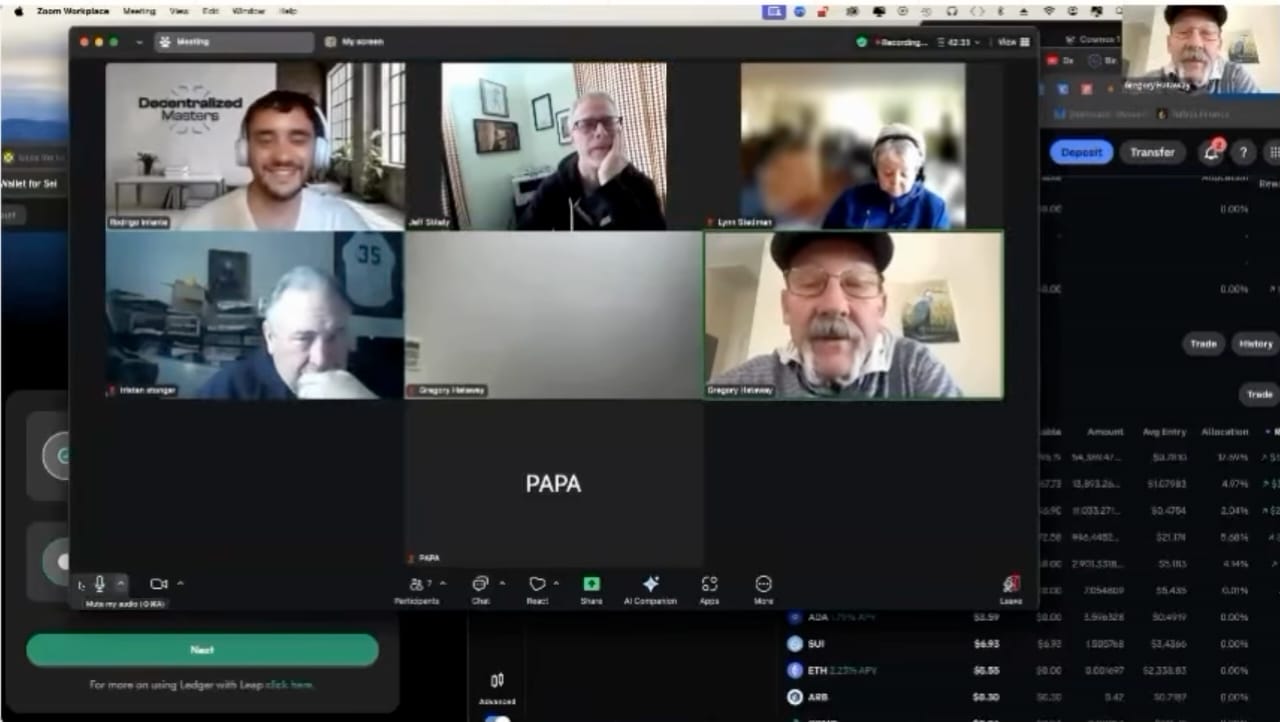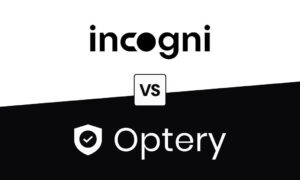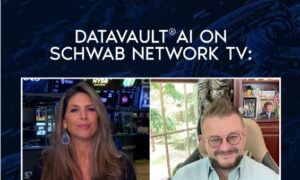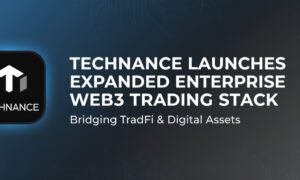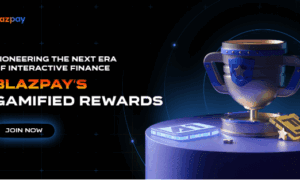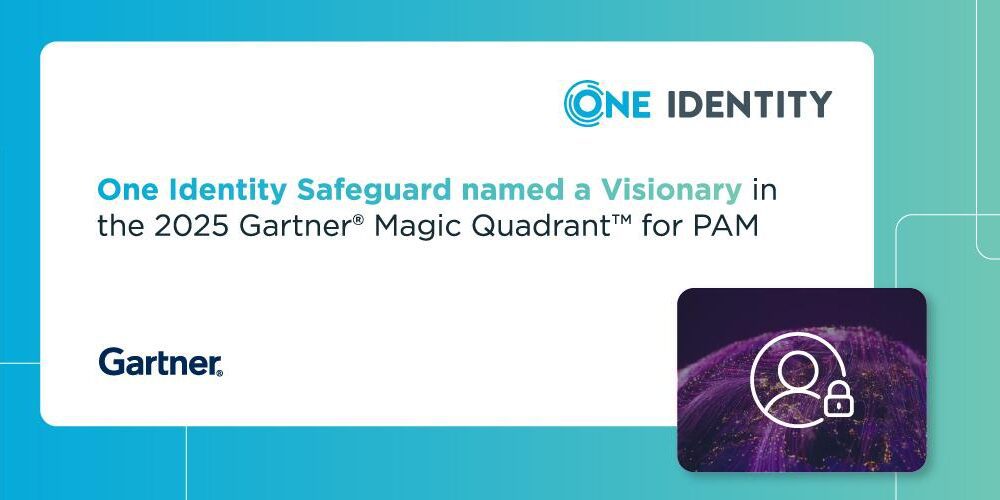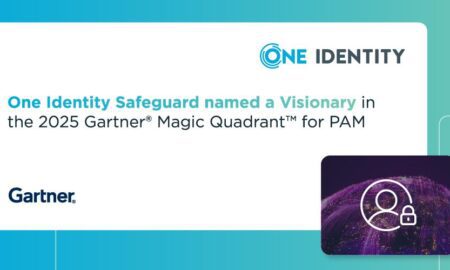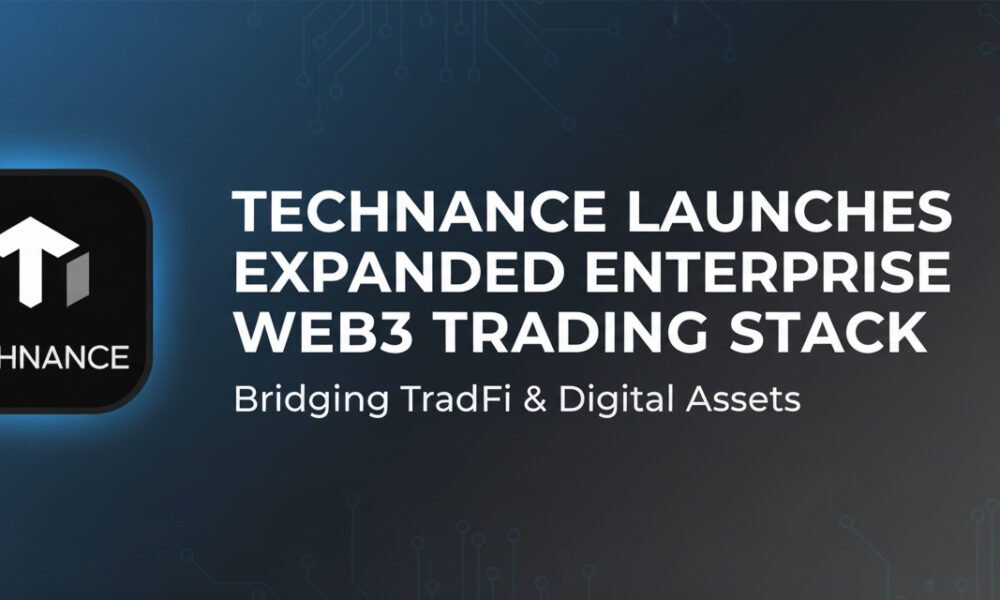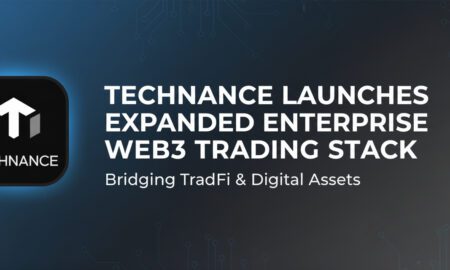Beyond the usual Decentralized Masters review, this is a financial journalist’s candid account of how skepticism transformed into advocacy after six months with the program.
I’ve spent twenty years of my life telling people to be cautious with their money. As a financial journalist covering everything from pension funds to the 2008 crash, I’ve developed a healthy skepticism toward anyone promising revolutionary financial solutions.
So when I first scrolled past an ad for something called “Decentralized Masters” promising financial sovereignty through DeFi education, my eyes couldn’t have rolled harder.
“Another investing scheme,” I muttered, continuing my morning scroll through news headlines.
But that ad kept appearing in my feed over the next few weeks.
Usually, I’d just block such things, but something about the messaging caught my attention. It wasn’t promising overnight riches or showcasing lamborghinis.
Instead, it spoke about protecting assets from banking instability and creating generational wealth—topics I’d been researching extensively for an upcoming series of articles.
After the third or fourth appearance, professional curiosity got the better of me. I clicked through, if only to gather material for a potential exposé on investor education programs targeting retirement-age Americans.
The Reluctant Call
What finally pushed me to book a consultation wasn’t journalistic curiosity alone.
I’d been watching the banking sector with growing unease. Three bank failures in a month, inflation stubbornly high despite the Fed’s assurances, and early whispers about Central Bank Digital Currencies had me genuinely concerned about the economic landscape.
Not that I’d admit that to anyone offering “DeFi solutions.”
I filled out their consultation form using my personal email rather than my work address—no need for PR pitches if this turned out to be the scam I expected. I was surprised when I received a personal email back rather than an automated response, offering several time slots with someone named Abe.
“Let’s see what this pitch looks like,” I thought as I joined the Zoom call the following Tuesday, notepad ready to document the red flags I was certain would appear.
The man on my screen wasn’t what I expected. No flashy background, no hype-man energy.
Abe introduced himself, and rather than launching into a sales pitch, he asked about my financial background and concerns.
“I’m just exploring options,” I said vaguely, not revealing my profession. “I’ve been reading about bank instability and inflation.”
Instead of using that opening to fear-monger, he nodded and gave a measured response.
“Those are legitimate concerns. Our founder, Tan Gera, actually comes from traditional finance. He was an investment banker and CFA Charterholder, which is pretty rare in this business, especially at his age.”
The Turning Point
My skepticism began to crack when Abe shared his screen to walk me through some case studies. These weren’t the usual cherry-picked success stories I expected.
Instead, he showed detailed portfolios with varying results—some exceptional, others more modest, all with clear explanations of the strategies used and risk levels involved
“Look, we’re not promising everyone will get these same results,” he said, pointing to a particularly impressive return. “This member had specific circumstances and risk tolerance that might not match yours. What we do promise is education and personal support.”
When I asked about the program’s cost—usually the moment when these pitches become uncomfortable—Abe was refreshingly straightforward. Instead of using pressure tactics, he explained the investment required and then did something that genuinely surprised me: he suggested I take time to think about it.
“This isn’t a decision to make impulsively,” he said. “I’ll send you some materials to review, and you can reach out with any questions. If it’s not right for you, that’s completely fine.”
After the call, I did my due diligence as a journalist. I researched Tan Gera and confirmed his credentials matched what Abe had claimed. I scoured the internet for reviews and complaints, finding predominantly positive experiences with a few legitimate critiques about the initial learning curve. Most tellingly, I reached out to two members whose contact information Abe had provided (with their permission).
“I was skeptical too,” said Robert, a retired business owner from Florida. “But they’ve delivered on everything they promised. It’s not get-rich-quick—it’s actual education with practical applications.”
The second call with a member named Grace, a former accountant, was equally illuminating. She walked me through her actual portfolio, showing returns that consistently outperformed her previous traditional investments while maintaining what she considered acceptable risk levels.
My journalistic instincts were now telling me this might not be the exposé I’d anticipated. I booked a follow-up call with Abe, this time with more specific questions about their educational approach and mentorship program.
Taking the Leap
The decision to join Decentralized Masters wasn’t one I made lightly. The program represented a significant investment—both financially and in terms of the time commitment required. As someone who has always been risk-averse with my own finances (despite reporting on high-risk investments), this felt like stepping far outside my comfort zone.
I spent a week weighing the pros and cons, speaking with my wife about whether this was a sensible move. We’ve always been diligent about our retirement planning, maxing out our 401(k)s and maintaining a diversified portfolio of index funds. But the returns had been underwhelming for years, and with retirement looming in the next decade, we were concerned about having enough.
“What’s the worst that could happen?” my wife finally asked. “You learn something new, and if it doesn’t work out, we’ve lost some money but gained knowledge. Isn’t that what you’ve always told our kids about education?”
She had me there. I’d always preached that investing in knowledge was the surest bet.
The tipping point came when I received an unexpected email from Tan Gera himself.
Apparently, Abe had mentioned my background in financial journalism to him.
“I understand your skepticism,” Tan wrote. “I came from traditional finance and had the same reservations about DeFi initially. I’d be happy to discuss any concerns directly before you make a decision.”
That personal touch, combined with the transparency I’d experienced so far, finally convinced me. I decided to approach this not just as a potential story, but as a personal financial education. If nothing else, I’d gain firsthand experience in an emerging financial sector that I’d previously only observed from a distance.
I enrolled in the program in February, starting with their DeFi Accelerator course and weekly mentorship sessions with my mentor, Rami. I was both excited and apprehensive—a combination I hadn’t felt about my finances in years.
The Educational Experience
The first thing that struck me about the program was its methodical structure. As someone who has taken countless financial education courses over my career, I’ve seen the good, the bad, and the absolutely useless.
Decentralized Masters fell firmly in the first category.
The course began with fundamentals, establishing a strong foundation before introducing more complex concepts. Each module built logically on the previous one, with clear explanations that avoided unnecessary jargon. When technical terms were introduced, they were explained in straightforward language with practical examples.
“Think of liquidity pools like being the house in a casino,” my mentor explained during one session. “The house doesn’t always win every bet, but over time, the mathematics ensure profitability. Similarly, providing liquidity means you’re essentially becoming the bank, earning fees from transactions rather than trying to time market movements.”
These analogies helped bridge the gap between traditional finance—which I understood well—and the new paradigms of decentralized finance.
The real value, however, came from the mentorship. Rami was available for weekly one-on-one video calls, but he also responded promptly to questions via text between sessions. This level of access was unexpected and invaluable, especially during the initial weeks when I was navigating unfamiliar territory.
Each mentorship session followed a consistent pattern: review of what I’d learned, answers to my questions, introduction of new concepts, and actionable steps for the coming week. This accountability structure ensured steady progress, preventing the overwhelm that often leads people to abandon new financial strategies.
What impressed me most was the emphasis on risk management and security. Far from encouraging reckless speculation, the program stressed the importance of understanding each strategy thoroughly before implementation, starting with small amounts, and gradually scaling up as comfort and knowledge increased.
“The goal isn’t to make you a day trader or gambler,” Rami emphasized repeatedly. “It’s to help you become your own bank—generating sustainable yields while maintaining control of your assets.
By month two, I had progressed from basic concepts to implementing my first DeFi strategy—a conservative liquidity provision that generated approximately 9% annual yield.
Modest by some standards, but nearly quadruple what my “high-yield” savings account offered.
First Results
I approached my first actual investments with extreme caution.
Despite the confidence I’d gained through education, decades of financial reporting had ingrained in me a healthy fear of the new and untested.
I started with what I considered “experimental money”—an amount I could afford to lose entirely without affecting my family’s financial security.
My first strategy involved providing liquidity in a pool of stablecoins—digital currencies designed to maintain a consistent value relative to the US dollar.
This felt like the safest entry point, offering yield without direct exposure to the price volatility that had always made me wary of digital currencies.
The process of setting up my wallet and executing my first transaction was nerve-wracking. I triple-checked every step, consulting with Rami before finalizing anything. When the transaction completed successfully, I felt a surprising sense of accomplishment—like I’d finally stepped into the future of finance that I’d been writing about theoretically for years.
Within the first few weeks, I was earning a steady stream of rewards that automatically compounded. The yields weren’t life-changing at this scale, but the potential was obvious. More importantly, I was beginning to understand the mechanisms that made these returns possible.
“What you’re essentially doing is capturing the fees that would normally go to banks or other financial intermediaries,” Rami explained during our review session. “By removing the middleman, DeFi allows value to flow directly to the participants providing capital.”
This concept resonated with me. Throughout my career, I’d reported on the massive profits banks generated from ordinary people’s money while passing relatively little back to depositors. Here was a system that redistributed that value to those providing the capital—a fundamental shift in financial power dynamics.
With growing confidence, I gradually expanded my strategies, following the roadmap Rami and I had developed based on my risk tolerance and financial goals.
By the end of month three, I had implemented four distinct strategies across different protocols, each serving a specific purpose in my overall portfolio:
- A stablecoin liquidity position generating 7-10% APY
- A more aggressive liquidity position with higher yields but some exposure to price movements
- A small allocation to a curated selection of promising projects on the “native markets” (platforms where assets trade before reaching mainstream exchanges)
- A yield farming strategy that was more complex but potentially more rewarding
The returns varied across these strategies, but even my most conservative positions were outperforming traditional alternatives.
More importantly, I was developing a genuine understanding of how these systems worked rather than blindly following recommendations.
Current Outcomes
Six months into my journey with Decentralized Masters, I’ve moved well beyond my initial experimental allocation. What started as a skeptical journalist’s investigation has evolved into a meaningful part of my financial strategy.
The numbers speak for themselves. My overall DeFi portfolio has generated a 34.3% return in just six months—significantly outperforming my traditional investments during the same period.
Breaking it down by strategy:
- My stablecoin liquidity positions have performed as expected, providing consistent 7-10% annual yields with minimal volatility
- The more aggressive liquidity strategy experienced some drawdowns during market fluctuations but has rebounded strongly, currently sitting at an 18% return
- The native market investments have been the most volatile but also the most rewarding, with one particular project returning over 80% (though I recognize this level of performance isn’t sustainable long-term)
- The yield farming strategy has settled into a 15-20% annual return range after some initial optimization
For perspective, during this same period, my traditional portfolio of index funds and bonds returned approximately 4.2%. The difference is striking.
Beyond the raw numbers, what’s most valuable is the increased resilience of my overall financial position. I’ve diversified not just across assets but across entirely different financial systems. If traditional markets struggle (as they periodically do), my DeFi investments provide a counterbalance. If there are issues with a particular DeFi protocol, it represents only a portion of my overall allocation.
This diversification provides me with something I’ve come to value enormously: optionality. I’m no longer entirely dependent on the traditional financial system that I’ve reported on—and sometimes criticized—throughout my career.
I’ve begun implementing a monthly “yield harvesting” strategy, converting a portion of my DeFi returns into stablecoins that I then withdraw to traditional accounts. This creates a regular income stream while allowing the core investment to continue growing. My wife and I recently used some of these proceeds to fund a long-postponed kitchen renovation—tangible evidence of the strategy’s success.
Looking ahead, I’m cautiously optimistic. I’ve seen enough market cycles to know that no investment strategy performs exceptionally forever.
There will be challenging periods, regulatory developments, and technical hurdles to navigate.
But the foundation of knowledge I’ve built through Decentralized Masters gives me confidence that I can adjust my approach as conditions change.
Who This Is For
Based on my experience, Decentralized Masters isn’t for everyone. It requires a specific mindset and approach that might not align with every investor’s personality or goals.
You’ll likely benefit from this program if:
- You’re concerned about the stability of the traditional financial system and want alternatives
- You’re willing to invest time in education before expecting returns
- You have some capital you can allocate to new strategies without compromising your essential financial security
- You value control and transparency in your investments
- You’re open to challenging conventional financial wisdom
Conversely, this probably isn’t right for you if:
- You’re looking for a passive, hands-off approach
- You want overnight results without learning the underlying principles
- You’re completely satisfied with your current investment performance
- You’re uncomfortable with any level of technological learning curve
The program requires commitment—both time and financial. While the exact investment varies based on the specific package and support level you choose, expect to dedicate at least 4-6 hours weekly during the initial learning phase and a meaningful financial commitment.
That said, I believe the return on investment potentially exceeds most educational programs I’ve encountered. The knowledge gained is applicable immediately and potentially valuable for decades to come as decentralized finance continues evolving.
Decentralized Masters Review: Final Word
If you had told me a year ago that I’d be writing about my positive experience with a DeFi education program, I would have questioned your sanity. As a financial journalist who has seen countless schemes come and go, my skepticism was well-earned.
Yet here I am, not only implementing DeFi strategies in my personal finances but actively recommending Decentralized Masters to friends and colleagues facing similar concerns about the traditional financial system.
What won me over wasn’t hype or unrealistic promises. It was the program’s emphasis on education, their transparent approach to risks and returns, and the genuine expertise behind their strategies. Tan Gera and his team have created something that bridges the gap between traditional finance and the decentralized future—making these powerful tools accessible to everyday investors like me.
The journey hasn’t been without challenges. There’s been a learning curve, moments of uncertainty, and occasional market volatility to navigate. But the combination of structured education and personalized mentorship provided the support needed to overcome these obstacles.
My perspective has fundamentally shifted. I no longer see DeFi as a fringe movement or speculative gamble, but as a legitimate alternative financial system with tangible benefits for those willing to learn its principles. It’s not about replacing traditional finance entirely, but about expanding options and reclaiming a measure of financial sovereignty.
For someone who began this journey as a hardened skeptic, that’s perhaps the most surprising outcome of all.
James Mitchell is a financial journalist with over 20 years of experience covering markets, banking, and investment strategies. He joined Decentralized Masters in November 2024 and has been documenting his journey from skeptic to advocate. The opinions expressed are his own and not necessarily those of his employers.

